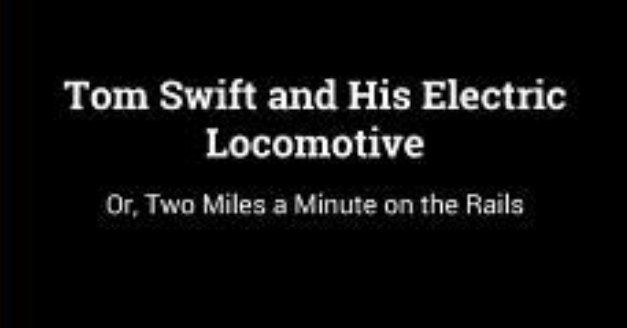CHAPTER XV — Tom Swift and His Electric Locomotive
byCHAPTER XV – Tom Swift and His Electric Locomotive begins in silence, broken only by the soft crunch of Ned Newton’s footsteps as he creeps through the dimly lit yard of the Swift Construction Company. The night is heavy with tension. Ned, dressed in dark clothes and guided by instinct, suspects that someone may be targeting the Hercules 0001 again. A faint flicker of movement near the perimeter fence confirms his unease. He crouches low, eyes fixed on a shadow that slinks along the boundary—someone clearly attempting unauthorized entry. Given the past attempts to sabotage Tom’s project, Ned prepares for the worst.
Without warning, the roar of Hercules 0001 ignites the night. Its test run lights up the yard, revealing a figure scaling the fence with the help of a pole rigged with notches. Ned’s breath catches. He sees the glint of wire cutters in the intruder’s hand. The man is tampering with the electrified fencing—a fatal mistake. Just as the locomotive thunders past, Ned shouts a warning. The cry comes too late. A burst of sparks erupts as the intruder is jolted back, writhing in pain. The crackling sound echoes through the yard, drawing Tom Swift and the security crew racing toward the source.
The man on the ground is Joe Myrick, a name Tom recognizes immediately. Myrick, once affiliated with the Blatz Detective Agency, has no reason to be on the premises—especially not with a can of oil tucked beneath his coat and tools for sabotage in his pockets. He fumes with arrogance, trying to intimidate them with vague legal threats. But Tom, calm and focused, sees through the posturing. The evidence is too strong to ignore. Myrick’s actions were deliberate and dangerous. The oil, the wire cutters, and the notched pole were not items carried by accident. They were instruments meant to cripple progress.
Tom wastes no time and orders the police to be contacted. He wants the matter dealt with publicly and lawfully. Ned, still shaken, offers a brief summary of the night’s events. Tom listens, nodding occasionally, but his attention is divided. He scans the area, wondering if Myrick was acting alone. The attack was brazen, too bold for one man. Had he been sent as a distraction while someone else moved elsewhere? Tom’s instinct for layered threats kicks in, and additional guards are stationed across the yard. He knows that when innovation reaches the edge of disruption, enemies rarely come just once.
As Myrick is taken into custody, Tom reflects on what this means. His invention—the Hercules 0001—is more than a machine now. It’s a target. The promise it holds for transforming rail transport makes it valuable, and in some circles, dangerous. Rivals like Montagne Lewis, threatened by what Tom’s engine represents, are growing more desperate. But Tom refuses to let fear control him. Instead, it fuels his determination to make the locomotive safer, faster, and more resilient. He takes this incident not just as a threat but as a lesson.
The next morning, security protocols are reviewed and reinforced. Tom meets with local law enforcement to ensure further sabotage attempts are dealt with harshly. Meanwhile, Ned assists with damage control, helping inspect the fencing and reassure employees. The crew, though rattled, admires how Tom handled the crisis. His leadership isn’t loud, but it’s felt. He doesn’t speak in anger. He speaks in purpose.
Later that day, Tom sits alone in the cab of the Hercules 0001, running his fingers along the controls. His mind is already drafting improvements: tamper alerts for the fencing, upgraded surveillance, and an internal failsafe for sabotage attempts. This isn’t paranoia—it’s preparation. Tom understands that with every step forward, resistance intensifies. But that’s the cost of leading change.
This chapter underscores more than a brush with danger. It reveals the broader tension between innovation and the fear it provokes. Tom Swift doesn’t retreat from that challenge. He advances, knowing that true progress requires not just invention, but the courage to defend it.

